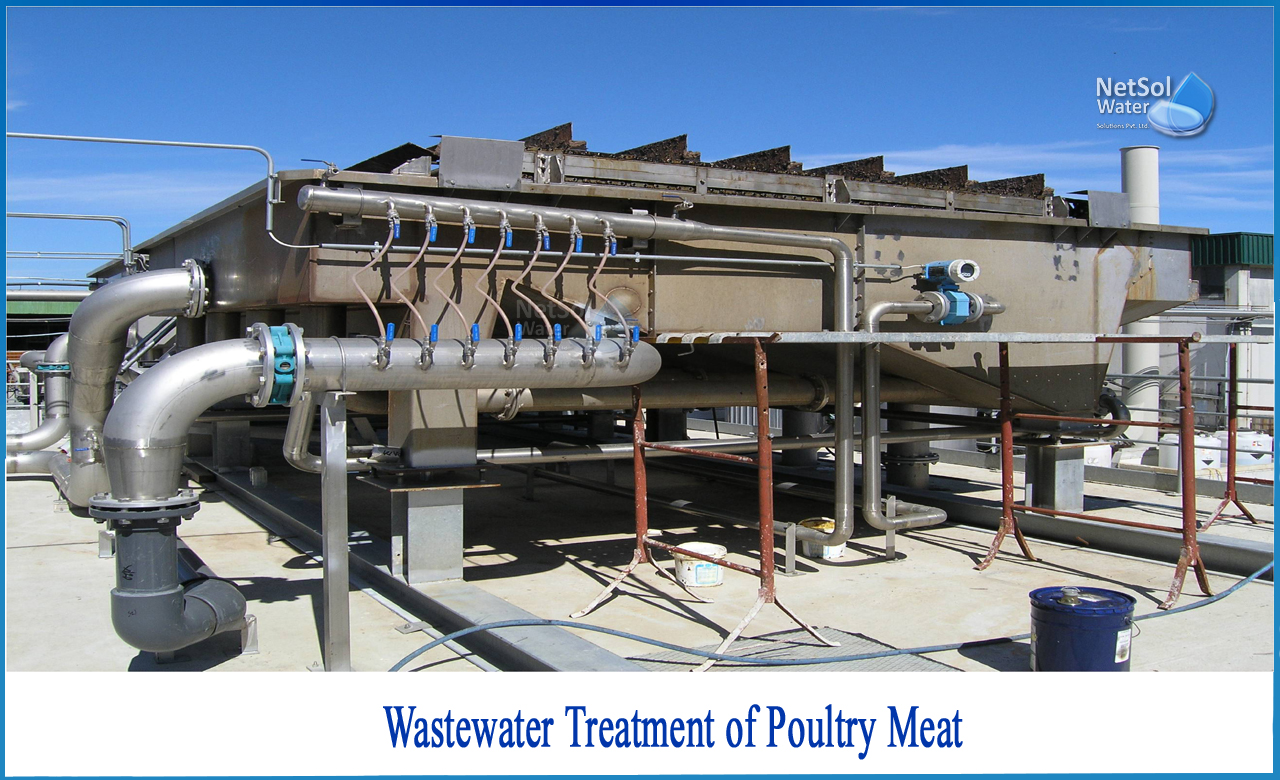What are Characteristics of drainage from poultry slaughterhouses?
Prior to wastewater treatment, it is important to characterize the wastewater to quantify pollutant levels using several instruments and test reagents. Parameters commonly used to describe PSWW are pH, COD, BOD, total organic carbon (TOC), total suspended solids (TSS), total nitrogen (TN), total phosphorus (TP), and pathogens.
COD indicates the amount of organic compounds in wastewater. A high COD concentration indicates that the wastewater contains a large amount of oxidizable organic matter. Similarly, BOD indicates bio oxidation of organic compounds, and high BOD values ??also mean that there are large amounts of organic pollutants in wastewater.
Too much nitrate in wastewater can lead to harmful algae outbreaks, oxygen deficiencies, fish poisons and stinks. A practical and simple method for reducing phosphorus in wastewater is chemical precipitation. These parameters vary from slaughterhousedue to many factors, including: System type, operation method, processingcapacity.
These measured parameters of raw PSWW are much higher than the standards accepted by the World Health Organization and other regulations, so PSWW must be processed below the standard limits.
Traditional treatment of poultry slaughter wastewater as a pre-treatment before membrane separation
The traditional treatment of PSWW is similar to urban sewage treatment and consists of pre-treatment, primary treatment and secondary treatment.
There are various combinations of treatments after pre-treatment, and the most common combinations are physicochemical treatment as first-line treatment and biological treatment as second-line treatment.Prior to PSWW membrane filtration, conventional treatment is required as a pre-treatment to reduce membrane fouling and improve overall membrane performance.
Pre-treatment removes suspended solids from PSWW. The most common pre-treatmentuses sieves. A typical wire mesh screen holds solids in the size of 10-30 mm. The rotary sieve extracts solids with a diameter of more than 0.5 mm. It also protects the equipment from contamination and clogging. Pre-treatment removes 60% suspended solids and 30% BOD from PSWW.
First-line treatment
After pre-treatment, PSWW undergoes a primary treatment to remove BOD, COD, oil, grease, fat, and residual TSS by physicochemical processes. Typical major processes are dissolved air floatation (DAF), electro coagulation, coagulation, and sedimentation.
Dissolved air floatation
DAF is a solid-liquid separation where air is introduced into the PSWW from the bottom of the tank and light solids, fats and grease are agitated on the surface to produce sludge blankets. The efficiency of the DAF system can be improved by adding polymers and other flocculants. In general, the efficiency of DAF in removing BOD and COD is 30-90% and 70-80%, respectively. In addition, DAF removes suspended solids from PSWW in the range of 38-70% and fat in the range of 63-95%. The drawbacks of DAF are regular malfunctions and poor TSS isolation.
Coagulation and sedimentation
During the coagulation process, the colloidal particles present in PSWW are grouped with large particles to form flocs. Because these colloidal particles are nearly negatively charged, they can be destabilized by adding a positively charged coagulant to stop the formation of flocs and accelerate the settling process. However, this process leads to toxicity and health hazards, inefficient removal of heavy metals and early-stage pollutants, and increased colour of wastewater.
Electro-coagulation
Electro-coagulation (EC) is an advanced method that uses electric current to remove large amounts of pollutants such as organic matter, heavy metals, and pathogens from wastewater. The EC process uses a variety of electrode materials to produce M3 +, Fe3+, or Al3+ ions. The most commonly used electrodes are Al and Fe.
Secondary treatment
Pollutants contained in wastewater that were not removed in the primary treatment are further treated in the secondary treatment. The main goal of post-treatment is to remove organic compounds and reduce BOD content. In post-treatment, biological processes, aerobic and anaerobic fermenters are used to treat PSWW. In both processes, organic matter is decomposed into simple compounds with the help of the decomposer, and the efficiency of the decomposer depends on the quality of the wastewater.
Anaerobic process
In biological treatment, anaerobic fermentation of organic waste, sludge, and highly contaminated sewage is a widespread technique.
The main goal of anaerobic systems is toreduce BOD at high levels. Anaerobic digestion consists of the steps of hydrolysis, acid production, acetic acid production, and methane production. With the help of diverse groups of microorganisms (bacteria and Achaea), complex organic compounds are broken down in the absence of oxygen. The rate of degradation depends primarily on different rates of bacterial activity.
In anaerobic treatment, organic compounds are broken down into methane, water and carbon dioxide by anaerobic bacteria in an anaerobic environment. However, PSWW is usually high in organic starch, which can adversely affect the performance of anaerobic processes. Therefore, PSWW anaerobic systems are often followed by additional treatment to remove TPs, TNs, and pathogenic microorganisms
Aerobic digestion
The main goal of aerobic digestion is nitrification. Aerobic digestion uses oxygen to break down organic matter and other pollutants. It breaks down ammonia and other organic substances into less harmful compounds such as carbon dioxide, water and nitrates. The oxygen and time required for this process depends on the organic intensity of PSWW. When decontaminating sludge water using anaerobic techniques, aerobic digestion is usually used as the final nutrient removal.
Membrane methods
After the secondary treatment effluent is treated, it is passed through membrane technologies. After this process the effluent is discharged.
Conclusion
Since PSWW waste water contains high amount of BOD, COD, TN, TP etc., it is imperative to treat it through every line of treatment and then finally filtration. Effluent produced after this is safe for discharge in water bodies.
Netsol Water is Greater Noida-based leading water & wastewater treatment plant manufacturer. We are industry's most demanding company based on client review and work quality. We are known as best commercial RO plant manufacturers, industrial RO plant manufacturer, sewage treatment plant manufacturer, Water Softener Plant Manufacturers and effluent treatment plant manufacturers. Apart from this 24x7 customer support is our USP. Call on +91-9650608473, or write us at enquiry@netsolwater.com for any support, inquiry or product-purchase related query.



